
CENNI STORICI
Abitata fin da ere preistoriche, Peschiera è nota nella letteratura paletnologica mondiale non solo per la ricchezza e per la straordinaria abbondanza dei materiali restituiti, ma anche perché essa ha dato il nome ad un orizzonte cronologico (Peschiera-Zeit), che s’identifica con l'età del Bronzo recente. A Peschiera sono stati riconosciuti resti di almeno sette villaggi palafitticoli, venuti alla luce in seguito ai lavori per la costruzione delle fortificazioni austriache, scavati senza metodologia scientifica, nel corso dell’Ottocento e che hanno restituito un'enorme quantità di materiali ceramici e metallici.In età romana la località continuò ad essere considerata economicamente importante: in essa era posta Arilica, poi divenuta Peschiera, e nella cittadina avevano sede un collegio di navicellai veronese e un collegio di navicellai benacensi, ricordati in ben tre iscrizioni superstiti. Non ci è noto quando Arilica abbia cambiato il suo nome in Peschiera, ma sembra che ciò sia avvenuto nell'VIII-IX secolo. Nel sec. X, pare che Peschiera abbia dato rifugio a Berengario I, sconfitto dagli Ungari e che passata poi in dominio dei Veronesi, questi vi fabbricassero uno dei loro castelli turriti e merlati, spianato da Ezzelino da Romano, e poi ricostruito e rafforzato. Il castello formava il nodo del sistema tra le fortificazioni costiere e quelle fluviali, perché qui s’intrecciavano le vie d'acqua e le vie terrestri; e proprio da questa combinazione scaturiva la sua speciale importanza militare. Insomma la posizione di Peschiera era essenziale per la Signoria che fece di questo borgo, con successivi interventi di rafforzamento, un ragguardevole caposaldo fortificato.Poi la tenace e vigorosa politica militare di Cangrande l della Scala arricchì le fortificazioni di nuovi interventi, documentati dalla lapide dell'anno 1327, conservata in Castelvecchio a Verona. Questa indica una serie d’importanti lavori, voluti da Cangrande I, che sembrano configurare anche la ristrutturazione della Rocca di Peschiera.Anche i Veneziani - succeduti poi nel governo di Peschiera agli Scaligeri, dopo la breve parentesi viscontea - non restarono insensibili all'opportunità di guardare a questa fortezza con una particolare attenzione. Visitata da Marin Sanudo - che ricordò nel suo Itinerario questa "rocha fortissima" - ebbe dapprima le attenzioni di Michele Sammicheli e poi quelle di Guidobaldo Il della Rovere, duca d'Urbino. Già da queste prime fortificazioni scaligere e veneziane, seguite poi dalle fortificazioni francesi, austriache ed italiane, il destino di Peschiera era per sempre segnato: Peschiera sarebbe stata una cittadella militare. E se ne soffrì per lunghi secoli l'economia del luogo, tuttavia oggi, divenuti questi vincoli un ricordo, possiamo invece guardare a Peschiera come ad uno dei più interessanti "laboratori" d’alcuni fenomeni urbani. Un "laboratorio" nel quale lavorarono storici accreditati.Ricordiamo infine che a Peschiera – nel novembre del 1917 – dopo la rotta di Caporetto, si sono dati convegno, nella palazzina adibita a sede del comando militare, e con Re Vittorio Emanuele III, gli alleati con gli italiani nella guerra contro l'Austria e cioè i rappresentanti di Francia e di Inghilterra. Qui Vittorio Emanuele sostenne di attestare l'esercito sulla linea del Piave e respinse la proposta degli alleati di ripiegare all'Adige, al Mincio e al Po. E i testi di storia narrano che la risolutezza e la fiducia del re trovarono conferma, dopo un anno, nella vittoria di Vittorio Veneto.
DA VEDERE
Porta Verona. Dal lato artistico, Peschiera oltre al monumentale complesso della cinta fortificata, agli arborati spalti che permettono al turista un’ampia visione sul circostante anfiteatro morenico (da Goito, a S. Martino e Solferino) e sul lago (da Sirmione a Lazise) vanta la severa «Porta Verona» sulla quale ancor si legge, sotto il leone alato, scalfito dai Francesi, la scritta «DlSCE HAEC MONEAT EXCELSA LEONIS IMAGO - NE STIMULES, VENETI SEU LEO IN HOSTIE VIGENT».
Monumento ai Caduti. Degno di nota il Monumento ai Caduti eretto sul molo: un legionario in atto di ripararsi al capo con lo scudo (la decisa resistenza al Piave fu scudo all'Italia): la statua fu modellata da Ruggero Dondè, e del pari la grandiosa caserma presso la chiesa e tre statue di antica fattura delle quali una è detta «Madona del saòn» (austera figura femminile che tiene in mano un libro). * Madonna del Frassino. Presso Peschiera è il santuario della Madonna del Frassino, celebre in tutto l'ambito provinciale veronese ma anche nel bresciano e nel mantovano. Il santuario fu eretto nel luogo dove l'undici maggio 1510 il contadino Bartolomeo Broglia avrebbe veduto apparire, fra le fronde appunto di un frassino, una statuetta della Madonna. Per secoli esso fu centro di fervore e di pietà mariana e il simulacro qui custodito fu incoronato solennemente il 24 settembre 1930 dopo che, alla fine dell’Ottocento, fu risvegliata dai francescani la devozione alla Madonna, sopita per la chiusura e l'abbandono della chiesa a seguito delle demaniazioni napoleoniche. Il tempio, ricco di tesori d'arte, merita una visita. Due tele di Paolo Farinati (La Natività e Madonna e Santi), una di Zeno da Verona (San Pietro e San Giovanni Battista), dodici del Bertanza da Salò (Misteri del Rosario e Santi), quattro tele del Muttoni il Giovane e altri dipinti, fanno di questa chiesa un’autentica pinacoteca. Ma ogni cappella, o quasi, è poi affrescata dallo stesso Farinati che visse parecchio presso questo santuario, tutto intento alla preparazione d’affreschi, come ricorda una lapide del chiostro. Probabilmente però il Farinati padre fu aiutato in questi lavori dal figlio Orazio e dalla figlia Cecilia, pure pittori e che con lui lavorarono in parecchie circostanze. Ammirevole anche il pregevole coro in noce eretto nel 1652 per iniziativa di fra Bartolomeo Speciani, così come una visita merita anche il chiostro con lunette affrescate sempre dal Muttoni.
Villa “Il Paradiso”. Presso il Mincio si adagia “il Paradiso”, villa restaurata nel 1962, la cui parte antica risale al 1536. Dal 1734 il Paradiso è di proprietà dei conti degli Albertini. Vi si entra attraverso un grande cancello in ferro battuto, con pilastri sormontati dalle statue di Adamo ed Eva. La facciata è notevole, e al centro presenta un grande pronao con timpano centrale e una bella scalinata, che porta al salone centrale.
Abitata fin da ere preistoriche, Peschiera è nota nella letteratura paletnologica mondiale non solo per la ricchezza e per la straordinaria abbondanza dei materiali restituiti, ma anche perché essa ha dato il nome ad un orizzonte cronologico (Peschiera-Zeit), che s’identifica con l'età del Bronzo recente. A Peschiera sono stati riconosciuti resti di almeno sette villaggi palafitticoli, venuti alla luce in seguito ai lavori per la costruzione delle fortificazioni austriache, scavati senza metodologia scientifica, nel corso dell’Ottocento e che hanno restituito un'enorme quantità di materiali ceramici e metallici.In età romana la località continuò ad essere considerata economicamente importante: in essa era posta Arilica, poi divenuta Peschiera, e nella cittadina avevano sede un collegio di navicellai veronese e un collegio di navicellai benacensi, ricordati in ben tre iscrizioni superstiti. Non ci è noto quando Arilica abbia cambiato il suo nome in Peschiera, ma sembra che ciò sia avvenuto nell'VIII-IX secolo. Nel sec. X, pare che Peschiera abbia dato rifugio a Berengario I, sconfitto dagli Ungari e che passata poi in dominio dei Veronesi, questi vi fabbricassero uno dei loro castelli turriti e merlati, spianato da Ezzelino da Romano, e poi ricostruito e rafforzato. Il castello formava il nodo del sistema tra le fortificazioni costiere e quelle fluviali, perché qui s’intrecciavano le vie d'acqua e le vie terrestri; e proprio da questa combinazione scaturiva la sua speciale importanza militare. Insomma la posizione di Peschiera era essenziale per la Signoria che fece di questo borgo, con successivi interventi di rafforzamento, un ragguardevole caposaldo fortificato.Poi la tenace e vigorosa politica militare di Cangrande l della Scala arricchì le fortificazioni di nuovi interventi, documentati dalla lapide dell'anno 1327, conservata in Castelvecchio a Verona. Questa indica una serie d’importanti lavori, voluti da Cangrande I, che sembrano configurare anche la ristrutturazione della Rocca di Peschiera.Anche i Veneziani - succeduti poi nel governo di Peschiera agli Scaligeri, dopo la breve parentesi viscontea - non restarono insensibili all'opportunità di guardare a questa fortezza con una particolare attenzione. Visitata da Marin Sanudo - che ricordò nel suo Itinerario questa "rocha fortissima" - ebbe dapprima le attenzioni di Michele Sammicheli e poi quelle di Guidobaldo Il della Rovere, duca d'Urbino. Già da queste prime fortificazioni scaligere e veneziane, seguite poi dalle fortificazioni francesi, austriache ed italiane, il destino di Peschiera era per sempre segnato: Peschiera sarebbe stata una cittadella militare. E se ne soffrì per lunghi secoli l'economia del luogo, tuttavia oggi, divenuti questi vincoli un ricordo, possiamo invece guardare a Peschiera come ad uno dei più interessanti "laboratori" d’alcuni fenomeni urbani. Un "laboratorio" nel quale lavorarono storici accreditati.Ricordiamo infine che a Peschiera – nel novembre del 1917 – dopo la rotta di Caporetto, si sono dati convegno, nella palazzina adibita a sede del comando militare, e con Re Vittorio Emanuele III, gli alleati con gli italiani nella guerra contro l'Austria e cioè i rappresentanti di Francia e di Inghilterra. Qui Vittorio Emanuele sostenne di attestare l'esercito sulla linea del Piave e respinse la proposta degli alleati di ripiegare all'Adige, al Mincio e al Po. E i testi di storia narrano che la risolutezza e la fiducia del re trovarono conferma, dopo un anno, nella vittoria di Vittorio Veneto.
DA VEDERE
Porta Verona. Dal lato artistico, Peschiera oltre al monumentale complesso della cinta fortificata, agli arborati spalti che permettono al turista un’ampia visione sul circostante anfiteatro morenico (da Goito, a S. Martino e Solferino) e sul lago (da Sirmione a Lazise) vanta la severa «Porta Verona» sulla quale ancor si legge, sotto il leone alato, scalfito dai Francesi, la scritta «DlSCE HAEC MONEAT EXCELSA LEONIS IMAGO - NE STIMULES, VENETI SEU LEO IN HOSTIE VIGENT».
Monumento ai Caduti. Degno di nota il Monumento ai Caduti eretto sul molo: un legionario in atto di ripararsi al capo con lo scudo (la decisa resistenza al Piave fu scudo all'Italia): la statua fu modellata da Ruggero Dondè, e del pari la grandiosa caserma presso la chiesa e tre statue di antica fattura delle quali una è detta «Madona del saòn» (austera figura femminile che tiene in mano un libro). * Madonna del Frassino. Presso Peschiera è il santuario della Madonna del Frassino, celebre in tutto l'ambito provinciale veronese ma anche nel bresciano e nel mantovano. Il santuario fu eretto nel luogo dove l'undici maggio 1510 il contadino Bartolomeo Broglia avrebbe veduto apparire, fra le fronde appunto di un frassino, una statuetta della Madonna. Per secoli esso fu centro di fervore e di pietà mariana e il simulacro qui custodito fu incoronato solennemente il 24 settembre 1930 dopo che, alla fine dell’Ottocento, fu risvegliata dai francescani la devozione alla Madonna, sopita per la chiusura e l'abbandono della chiesa a seguito delle demaniazioni napoleoniche. Il tempio, ricco di tesori d'arte, merita una visita. Due tele di Paolo Farinati (La Natività e Madonna e Santi), una di Zeno da Verona (San Pietro e San Giovanni Battista), dodici del Bertanza da Salò (Misteri del Rosario e Santi), quattro tele del Muttoni il Giovane e altri dipinti, fanno di questa chiesa un’autentica pinacoteca. Ma ogni cappella, o quasi, è poi affrescata dallo stesso Farinati che visse parecchio presso questo santuario, tutto intento alla preparazione d’affreschi, come ricorda una lapide del chiostro. Probabilmente però il Farinati padre fu aiutato in questi lavori dal figlio Orazio e dalla figlia Cecilia, pure pittori e che con lui lavorarono in parecchie circostanze. Ammirevole anche il pregevole coro in noce eretto nel 1652 per iniziativa di fra Bartolomeo Speciani, così come una visita merita anche il chiostro con lunette affrescate sempre dal Muttoni.
Villa “Il Paradiso”. Presso il Mincio si adagia “il Paradiso”, villa restaurata nel 1962, la cui parte antica risale al 1536. Dal 1734 il Paradiso è di proprietà dei conti degli Albertini. Vi si entra attraverso un grande cancello in ferro battuto, con pilastri sormontati dalle statue di Adamo ed Eva. La facciata è notevole, e al centro presenta un grande pronao con timpano centrale e una bella scalinata, che porta al salone centrale.
HISTORICAL SIGNALS
Lived ere since preistoriche, Fish farm is famous in world-wide the paletnologica literature not only for the wealth and the extraordinary abundance of the given back materials, but also because it has given to the name to a chronological horizon (Fish farm-Zeit), than s' it identifies with the age of the recent Bronze. To Fish farm at least seven palafitticoli villages have been recognized rests, come to the light as a result of the jobs for the construction of the fortifications Austrians, dig to you without scientific methodology, in the course of the 1800's and that they have given back an enormous amount of ceramic and metallic materials. In roman age the locality continued to being considered economically important: in it it was placed Aryl, then become Fish farm, and in the citizen they had center a college of navicellai veronese and a college of navicellai benacensi, very remembers in three registrations survivors to you. Not there is famous when Aryl has changed its name in Fish farm, but it seems that that has happened in the VIII-IX century. In sec. the X, it seems that Fish farm has given shelter to Berengario I, defeated from the Ungari and that last then in dominion of the Veronesi, these manufactured you one of their turriti castles and merlati, smoothed from Ezzelino from Roman, and then reconstructed and strengthened. The castle formed the node of the system between the coastal fortifications and those fluvial ones, because here s' they interlaced the land water ways and ways; and just from this combination its special military importance gushed. Insomma the position of Fish farm was essential for the Lordship that it made of this village, with successes to you participations of strengthening, a considerable fortified bench mark. Then tenacious and vigorous military politics of Cangrande l of the Scale enriched the fortifications of new participations, document to you from the lapide of year 1327, conserved in Castelvecchio to Verona. This indicates an important series works, intentional from Cangrande I, that they seem to shape also the restructure of the Rocca of Fish farm. Also the Veneziani - succeduti then in the government of Fish farm to the Scaligeri, after the short viscontea parenthesis - did not remain insensitive to the opportunity to watch to this fortress with one particular attention. Visited from Marin Sanudo - that it remembered in its Route the this “rocha strongest” - it had the attentions of Michele Sammicheli at first and then those of Guidobaldo of the Rovere, duca of Urbino. These first fortifications to already scaligere and veneziane, continuations then from the French fortifications, Austrians and Italians, the destiny of Fish farm in order were always marked: Fish farm would have been one military citadel. And of it the economy of the place suffered itself for long centuries, however today, become these ties a memory, we can instead watch to Fish farm like to one of the more interesting “laboratories” of some city phenomena. A “laboratory” in which they worked historical credits to you. We remember at last that to Fish farm - in the November of 1917 - after the route of Caporetto, they have given convention, in the mansion used after center of the military commando, and with King that is Vittorio Emanuele III, the representatives of France and England ally it to you with the Italians in the war against Austria and. Here Vittorio Emanuele supported to attest the army on the line of the Piave and rejected the proposal of allies you to withdraw to the Adige, the Mincio and the Po. And the history witnesses narrate that the risolutezza and the confidence of the king found confirmation, after a year, in the Victoria of Vittorio Veneto.
TO SEE
Verona door. From the artistic side, Fish farm beyond to the monumental complex of the fortified town-walls, to arborati spalti that they allow to the tourist a wide vision on the surrounding morainic amphitheater (from Goito, to S. Martino and Solferino) and on the lago (from Sirmione to Lazise) the which still boasts the strict “Verona Door” on law, under the winged lion, scalfito from the French, written “DlSCE HAEC MONEAT EXCELSA LEONIS IMAGO - OF STIMULES, VENETI SEU LEO IN HOSTIE VIGENT”. Monument to the Fallen. Worthy of famous the Monument to the Fallen erected on the wharf: a legionario in existence to repair to the head with the shield (the decided resistance to the Piave was shield to Italy): the statue was modeled from Ruggero Dondè, and of the par the huge barracks near the church and three statues of ancient invoice of which one are said “Madona of saòn” (the austera feminine figure that holds in hand a book). * Madonna of the Frassino. Near Fish farm it is the sanctuary of the Madonna of the Frassino, celebre in all the veronese provincial within but also in the bresciano and the mantovano. The sanctuary was erected in the place where eleven May 1510 the peasant Bartolomeo Broglia would have seen to appear, between the rebellions exactly of a frassino, one statuetta of the Madonna. For centuries it was fervor center and of solemn the 24 mariana mercy and the simulacro guarded here september 1930 was incoronato after that, to the end of the 1800's, the devozione to the Madonna, sopita for the closing and the abandonment of the church was risvegliata from the Franciscans as a result of the napoleoniche demaniazioni. The tempio, rich of art treasures, it deserves a visit. Two burlaps of Paul Farinati (the Natività and Madonna and Know to you), one of Zeno from Verona (Saint Peter and San Giovanni Batiste), twelve of the Bertanza from Salò (Mysteries of the Rosary and Know to you), four burlaps of the Muttoni the Young person and other paintings, make of this church an authentic pinacoteca. But every nail head, or nearly, then is frescoed from the same Farinati that lived much near this sanctuary, all attempt to the preparation of frescoes, as it remembers one lapide of the chiostro. Probably but the Farinati father was helped in these jobs from the Orazio son and the daughter Cecilia, also painters and that with he they worked in several circumstances. Admirable also the pregevole chorus in walnut erected in 1652 for initiative of between Bartolomeo Speciani, therefore as a visit deserves also the chiostro with lunette always frescoed from the Muttoni. Villa “the Paradise”. Near the Mincio the Paradise is lain down “”, villa restored in 1962, whose ancient part laughed them to 1536. From the 1734 Paradise it is of property of the accounts of the Albertini. You one enters through a great gate in wrought iron, with pillars sormontati from the statues of Adam and Eva. The facade is remarkable, and to the center it introduces a large one pronao with eardrum centers them and a beautiful perron, than door to the hall they centers.
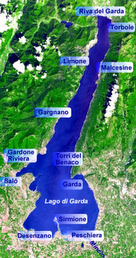

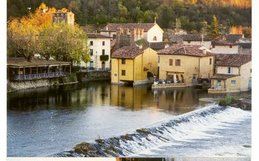
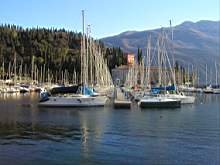
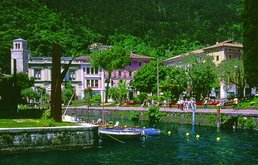
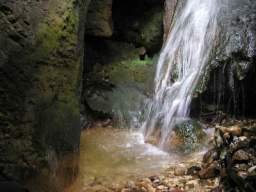

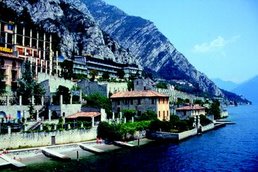
Nessun commento:
Posta un commento